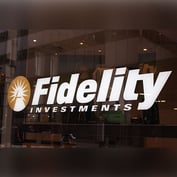There are countless ways to mess up seminar marketing. Of all the possibilities, the following six are the worst. Commit two or more of these seminar sins, and you will join the legion of advisors who mutter “Seminars don’t work anymore.”
Seminars do work, by the way, so long as you get everything right. “Everything,” by the way is spelled out in my white paper, “Seminar Success Zone” available free at www.billgood.com/successzone.
#1: Ignore Competitors. You can have a great seminar idea. But if five other people in your market have the same great idea and each of them is blasting out 5,000 invitations every month, results are likely to be around 0.2%. Yikes.
Ignore what the other people in your market are doing at your peril. Research your market first.
Call half a dozen clients in as many different areas. Ask them to save all the seminar invitations they receive. Even take a box to each home prominently labeled “Seminar Invites for Buford.” In a month, go pick up the boxes, bringing a nice thank you gift of course.
Your boxes will contain the invitations sent out by Response Mail Express, CIS Marketing and Emerald. You may see invitations created by advisors and printed locally. With a little practice, you can recognize the style of each of the big three. But if you see that one company is dominating the market, consider using another so that your invite stands out.
What you are really looking for is one or more invitations being sent month after month. Odds are, invitations sent out repeatedly are the ones that are working.
It’s time for onsite research. Certainly do not sign up for a competitor’s seminar. You would not want someone doing that to you. But there’s nothing wrong in paying a visit to the restaurant or hotel on the night of the event. Walk past the registration table a couple of times. Are people showing up? Or is it empty? My guess is the room will be full.
Now you know what invitation is working in your marketplace. I’m not saying copy it, but certainly take into account the subject, invitation style, bullet points and location etc. According to me, “It’s easier to rewrite than it is to write.”
#2: Don’t Test. Before committing the troop to a particular seminar idea, let’s test market. Your day job, of course, is financial advisor. But your other job is direct response marketer. As such, the first commandment is: test.
Instead of blasting out 5,000 invitations, I want you to test small. The big mailing houses may require a 5,000 minimum. So you need to work with a local mail house or printer to test small. What’s small? Maybe 1,500 or 2,000 invitations.
You need a minimum response rate of 0.8%. Obviously, 1% or 1.2% is better and, by the way, is quite achievable in today’s market. But, you can be extremely profitable at 0.8%, assuming everything else works.
Suppose your first mailing fails. You sent out 1,500 invitations and only two couples accept. You spent $1,000, or whatever. Not $5,000. You didn’t blow your whole budget. Round up four or five client couples and invite them to dinner. By surrounding your two prospects with clients, you have an excellent chance of getting one new account. You made profit on a failed seminar campaign.
Now, test again. Change the invitation. Or change the list or location. Test again. Keep testing small until you hit 0.8% or better.
#3: Bad Invitation. If you want a bad invitation, here’s how to create one: (1) Go cheap. Print a wedding style invitation on your laser printer. (2) Don’t sell.
I am looking at an invitation right now headlined “Savvy Medicare Planning: What Baby Boomers Need to Know about Medicare Coverage.” All it offers is “Up to date information you need to help you understand the basics of Medicare.” With that little bit of information would you give up several hours of your time?
A good invitation has a good title. This one actually did. But a good invitation also has three to five bullet points arguing persuasively for the reader to pick up the phone. A good invitation sells. It does not merely inform.
#4: Bad Location. A few years ago, I was helping a client debug a failing seminar. As I went down my little checklist, I asked, “What is your location?”
He answered: “A quality Holiday Inn.” I replied: “There is no such thing.”
We moved his location to the best restaurant in town. He sent out another invitation, identical except for the restaurant. Both events were booked solid.
Make no mistake: People will come for food. It is the skill of the presenter that converts the so-called “eaters” into prospects. (Advisors who complain about “eaters” generally have poor presentation.)








 May 24, 2012 at 08:00 PM
May 24, 2012 at 08:00 PM










